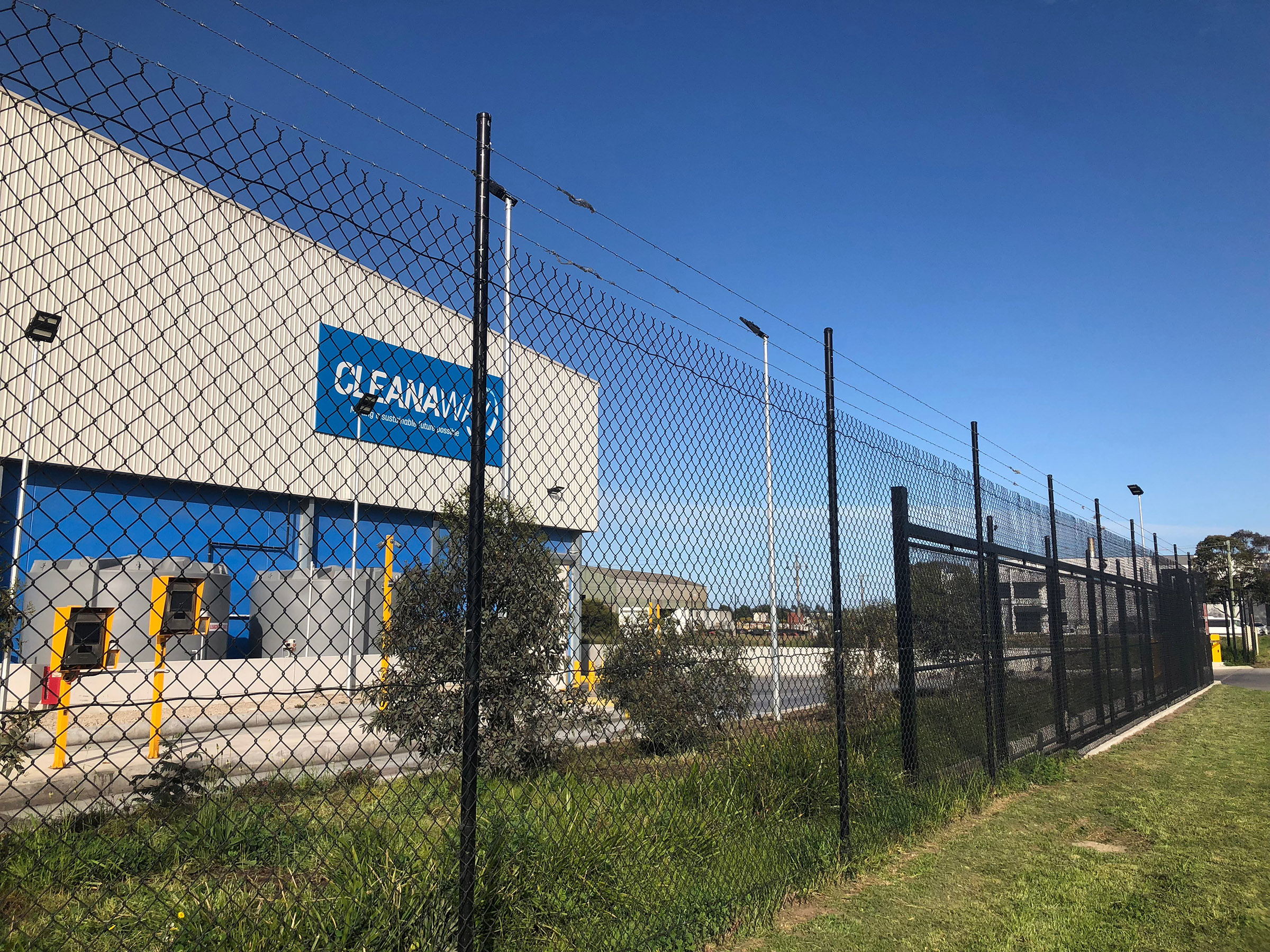
CYLCONE FENCE
A chain link fence, also known as a wire-mesh or chainwire fence, is a type of woven fence usually made from galvanized or coated steel wire. The wires run vertically and are bent into a zigzag pattern to form a diamond pattern. Cyclone fence cost are low compare to other panel fences. The chainlink fence post centres spans greater than 3m making it a very costs effective fence. Chainlink fence installation is also more effective than the other types of metal fences. The flexibility of the chainwire mesh fence enables a low maintainance and also the cylcone fencing repairs are very cheap to do. The finishes can be galvanised or PVC plastic coated in black or other colours.
Our Products
 Chainwire gates
Chainwire gates Chainwire sliding gate
Chainwire sliding gate Cyclone fence installation
Cyclone fence installation Cyclone fence repairs
Cyclone fence repairs
 Chainwire fence
Chainwire fence Chain link fence post
Chain link fence post Chain link fence panels
Chain link fence panels Chain link fence parts
Chain link fence parts
Components:
- Mesh Fabric: The woven steel wire that makes up the main body of the fence.
- Posts: Vertical poles that support the fence. They can be set in concrete for stability.
- Top Rail: A horizontal bar that runs along the top of the fence, providing additional stability.
- Tension Wire: A wire that runs horizontally at the bottom and sometimes at the top of the fence to keep the mesh tight.
- Tie Wires and Clips: Used to attach the mesh fabric to the posts and top rail.
- Gates: Access points made from the same material as the fence.
Applications of Chain Link Fences
Residential Use:
- Property Boundaries: To define property lines and prevent unauthorized access.
- Pet Enclosures: To create safe areas for pets to play.
- Garden Fencing: To protect gardens from animals and pests.
Commercial Use:
- Business Security: To secure the perimeter of commercial properties.
- Construction Sites: Temporary fencing to secure construction sites.
- School Grounds: Enclosing playgrounds and sports fields.
Industrial Use:
- Factories and Warehouses: To secure the perimeter and restrict access.
- Utility Areas: Protecting areas such as electrical substations, water treatment plants, and other critical infrastructure.
Sports Facilities:
- Baseball Fields: Used as backstops and to enclose the field.
- Tennis Courts: To prevent balls from leaving the playing area.
- Playgrounds: Providing a safe enclosure for children.
Public Spaces:
- Parks and Recreation Areas: Defining boundaries and securing specific areas.
- Highways and Roads: Installed along highways to prevent animals from entering the roadway and to mark boundaries.
Advantages:
- Durability: Made from galvanized or coated steel, they resist rust and corrosion.
- Visibility: Allows for clear visibility through the fence.
- Cost-Effective: Generally cheaper than other types of fencing.
- Easy Installation: Quick and straightforward to install, especially over large areas.
- Low Maintenance: Requires minimal upkeep once installed.



